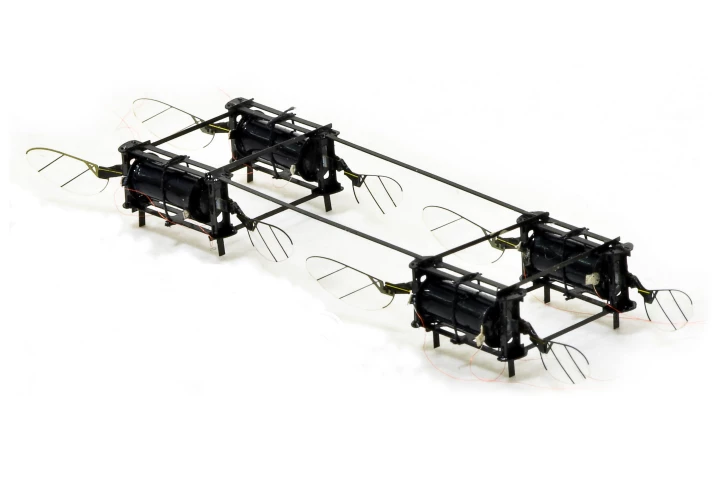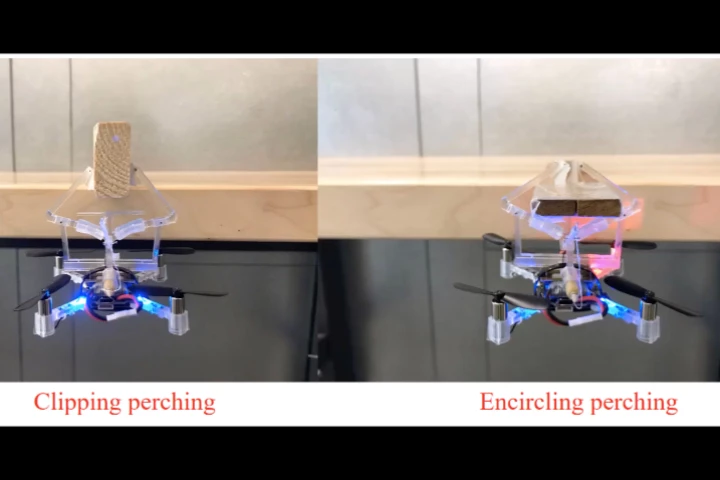MAV
-
Even if you've built one of the world's best insect-inspired micro air vehicles, it won't be that useful if it can't stick a landing. That's why Harvard scientists have now given their RoboBee a set of long, jointed legs like those of the crane fly.
-
Robotic versions of flying insects hold a lot of promise for numerous applications, but controlling their yaw axis while in flight has proven challenging. A new bee robot, however, addresses that problem with a clever design.
-
Although wing-flapping micro-drones do already exist, the things tend to be quite fragile – and thus not ideally suited to real-world use. An experimental new one, however, utilizes a softer mechanism for greatly enhanced durability.
-
Tiny quadcopter drones, or micro air vehicles (MAVs), have notoriously short battery lives. So, if they can "perch" somewhere instead of hovering in mid-air, more power to them. A new gripper mechanism has been designed with that in mind.
-
For 13 years now, a Dutch research team has been building autonomous flying robots inspired by the humble fruit fly. Now, with the DelFly Nimble, they've achieved their closest mimic yet, with an incredibly agile fly-bot capable of multi-axis hovering and even turning flips.
-
You might remember RoboBee, an insect-sized robot that flies by flapping its wings. Unfortunately, though, it has to be hard-wired to a power source. Well, one of RoboBee's creators has now helped develop RoboFly, which flies without a tether.
-
Back in 2013, RoboBee became the world's first insect-sized winged robot to demonstrate controlled flight. A couple of years later, it gained the ability to swim. The problem was, it couldn't get back out of the water. Well, thanks to a "spark" of innovation, now it can.
-
We've already seen micro air vehicles (MAVs) that mimic the flapping-wing flight of bats. Recently, however, scientists developed a bat-inspired membrane for use in MAV wings, that changes shape in order to improve its performance.
-
Turbulence can be unpleasant enough for passengers in full-sized aircraft, but it's even more of a challenge for micro air vehicles. That's why a team from RMIT University in Melbourne, Australia, has looked to birds for a solution.
-
Why go to the trouble of designing tiny flying robots from scratch, when there are already ready-made insects that are about the right size? That's the thinking behind research being conducted at North Carolina State University, which is aimed at converting moths into "biobots."
-
Autonomous micro air vehicles have to be capable of identifying objects in their environment, and reacting accordingly – much like bees do. Well, thanks to research recently conducted in Berlin, that may soon be possible.
-
Yesterday a team of researchers from the Netherlands' Delft University of Technology announced its DelFly Explorer, which is described as "the first flapping wing Micro Air Vehicle that is able to fly with complete autonomy in unknown environments."
Load More











